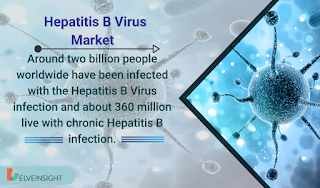Acute Respiratory Distress Syndrome: Introduction, Causes, Symptoms, Epidemiology, Market, Treatment and market size
Acute Respiratory
Distress Syndrome or ARDS, an acute diffuse, inflammatory lung damage and
injury, which leads to raised pulmonary vascular permeability, increased lung
weight, and loss of aerated lung tissue with hypoxemia and bilateral
radiographic opacities, associated with increased venous admixture, increased
physiological dead space and decreased lung compliance.
ARDS Causes
The leading cause of
the disease is when the fluid is exuded from the blood vessels into the small
air sacs where the blood is oxygenated. The most common underlying causes of
ARDS are:
·
Sepsis. The most common cause is sepsis, which
is a severe infection of the bloodstream.
·
Inhalation
of harmful substances. If
high concentrations of smoke or chemical fumes are inhaled in the, it can
result in ARDS.
·
Severe
pneumonia. Severe cases of
pneumonia affect all five lobes of the lungs.
·
Head,
chest or another significant injury. Accidents like falls or car crashes can squarely damage
the lungs or the portion of the brain that controls breathing.
·
Others. Pancreatitis, massive blood transfusions
and burns.
ARDS Symptoms
ARDS symptoms can
differ in intensity, depending on its cause and severity, as well as the
presence of underlying heart or lung disease. These are severe shortness of
breath, laboured and unusually rapid breathing, low blood pressure, confusion
and extreme tiredness.
ARDS
Epidemiology
Many people are
affected as there were total 815,490 Acute Respiratory Distress Syndrome
incident cases in the 7MM in 2017. The United States accounts for the highest
Acute Respiratory Distress Syndrome incident cases with 497,947 cases in 2017.
The overall incidence of moderate ARDS was maximum in the US with 232,044 cases
in 2017, followed by mild and severe and is subjected to increase rapidly in
the coming years. Among the EU5 countries, Germany had the highest incident
population of ARDS with 148,302 cases, followed by Italy, which had the
incident population of 44,700 in 2017 whereas, Spain had the lowest incident
population of 20,839 in 2017.
ARDS Market
As many people are
affected by the disease due to which the global burden of ARDS has increased
over the years. Among the seven major markets, the United States has reported
maximum incident cases of ARDS. The therapeutic Acute Respiratory Distress
Syndrome market in the seven major markets was USD 787.1 Million in 2017.
The United States
holds the highest ARDS market share of 2017 with USD 490.75 million. Among EU5
countries, Germany has the largest Acute Respiratory Distress Syndrome market
size with USD 136.41 million in 2017, while Spain has the smallest ARDS market
size, with USD 19.17 million in 2027.
ARDS treatment
Acute Respiratory
Distress Syndrome treatment is mainly supportive, which includes invasive
mechanical ventilation with lung protective strategies. However, long-term
intubation may carry a high rate of complications, including ventilator-associated
pneumonia, delirium and critical illness myopathy and neuropathy. Noninvasive
ventilation (NIV) and the application of continuous positive airway pressure
(CPAP) is contemplated in mild ARDS, although its use in acute hypoxemic
respiratory failure remains controversial and the choice of the interface
device is still debated.
Other ARDS treatment
options, which the patients with ARDS are generally subjected to, include
supplemental oxygen, prone positioning, use of people with paralysis, fluid management
and a technique called positive end-expiratory pressure (PEEP) to push the
fluid out of air sacs. These are in combination with persistent treatment of
the original illness. Antibiotics are given to people to fight infection. Also,
supportive treatment, such as intravenous fluid or food, may be needed.
Further, the use of adjunctive treatments in patients with ARDS on day 1 or 2
was relatively low but increased with ARDS severity. Continuous neuromuscular
blocking agents, high-dose steroids, and recruitment manoeuvres are the most
frequently used adjuncts.
Several methods for
pharmacological intervention have been evaluated in patients with ARDS, but
most of them failed to decrease mortality or improve outcomes despite some
promising observations seen in preclinical studies. Prior methods such as
nitric oxide inhalation, neuromuscular blocking agents and corticosteroids may
still have a place in the treatment, while novel therapeutic approaches
comprising the use of angiotensin-converting enzyme inhibitors, statins and
stem cells are currently under investigation and are prescribed as off-label
treatment regimens. Despite recent advances in critical care, the mortality due
to ARDS varies significantly. Thus, as ARDS is progressing at a breakneck pace,
therefore there is an immediate need to have approved therapies for ARDS
treatment. It is anticipated that the ARDS market size of the currently
available supportive therapies for the treatment shall experience steady growth
throughout the study period [2016-2027], in the US. However, the emerging
therapies targeted for ARDS are expected to fuel the growth of the market.
ARDS Market Size by
Therapies
The dynamics of ARDS
market is anticipated to change during the forecast period due to the expected
launch of emerging therapies during the forecast period of 2019-2028. The
leading players in the ARDS market are Faron Pharmaceuticals, Implicit
Bioscience, Techpool Bio-Pharma, BioMarck Pharmaceuticals, Athersys, Apeptico
Forschung und Entwicklung GmbH, Savara, Cynata Therapeutics, and others. Two
upcoming therapies in the late clinical development, are aimed at ARDS
treatment and hence are anticipated to make a significant impact on ARDS market
size. These include Traumakine (Faron Pharmaceuticals) and BIO- 11006 (BioMarck
Pharmaceuticals) and are expected to launch during the forecast period
[2018-2027].




As reported by Stanford Medical, It is indeed the SINGLE reason this country's women get to live 10 years longer and weigh on average 42 lbs lighter than us.
ReplyDelete(And really, it has NOTHING to do with genetics or some secret diet and EVERYTHING around "HOW" they eat.)
BTW, What I said is "HOW", and not "WHAT"...
Click on this link to see if this little test can help you unlock your true weight loss possibility